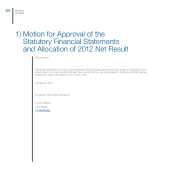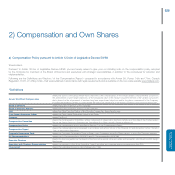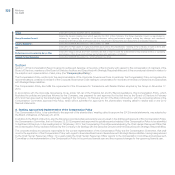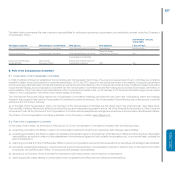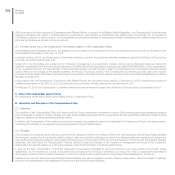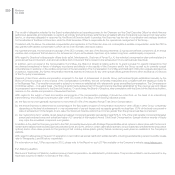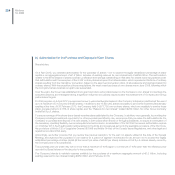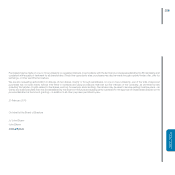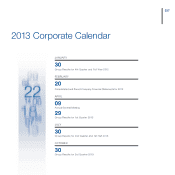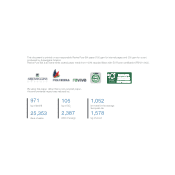Chrysler 2012 Annual Report Download - page 332
Download and view the complete annual report
Please find page 332 of the 2012 Chrysler annual report below. You can navigate through the pages in the report by either clicking on the pages listed below, or by using the keyword search tool below to find specific information within the annual report.
331
Auditors’ Reports
and Motions for AGM
E.3 Executives with Strategic Responsibilites
The same principles and criteria described above are applied to compensation for Executives with Strategic Responsibilities for the purpose of attracting,
incentivizing and retaining highly-qualified personnel through compensation packages that are competitive with the market and recognize key attributes
such as merit, demonstrated leadership and the impact of an individual’s role on the achievement of Group financial targets.
The standard compensation structure for Executives with Strategic Responsibilities provides a fixed component as well as short and long-term variable
components. As stated above, the fixed compensation component adequately compensates individuals for services performed even if the variable
components are not received as a result of performance targets not being met.
The short-term variable component is subject to the achievement of financial targets established yearly and the amount determined in relation to the level
of achievement or over-achievement of those targets, up to a maximum established in relation to the fixed component.
Following to the shareholders’ approval of the LTI Plan on April 4, 2012, the long-term variable component consists of share-based incentive plans that link
an appropriate portion of the variable component to the achievement of pre-established performance targets, that are concretely measurable and correlated
to value creation for shareholders over the medium to long term. Payment of this compensation is deferred through the cliff vesting mechanism following
the achievement of the established targets and satisfaction of the conditions for continued service. Another component is the Retention LTI, which is linked
to the beneficiary’s continuing professional relationship with the Group. The selection of the beneficiaries is attributed to the CEO.
For more information on the LTI Plan, please refer to the ad hoc Resolution published pursuant to Article 114-bis of the Financial Act.
As a general principle, the remuneration package of Executives with Strategic Responsibilities consists, inter alia, of the following elements: (i) a gross annual
fixed component; (ii) an annual variable cash component that is based on the achievement of pre-set business objectives; (iii) a medium-long term equity
based variable component (which includes stock options mentioned in Paragraph E.1 above and the share-based incentives contemplated by the LTI Plan
approved by the shareholders on April 4, 2012).
With regard to allowances in the event of resignation or termination as well as health and welfare benefits, including supplementary pension benefits, please
refer to Paragraphs L and M below, respectively.
In addition, the CEO may grant discretionary bonuses to these managers for specific transactions that are deemed exceptional in terms of strategic
importance and effects on the results of the Company and/or the Group.
When setting the compensation of Executives with Strategic Responsibilities, the CEO, on the basis of international benchmarking, considers the following
indicative criteria:
(a) the fixed component generally represents no more than 50% of the targeted Annual Total Direct Compensation;
(b) the annual targeted incentive for Executives with Strategic Responsibilities represents not less than 40% of their fixed gross annual salary;
(c) the medium/long term, variable, target-based annualized component (Long Term Incentive Plans) generally represents at least 50% of the total variable
component of the target-based Annual Total Direct Compensation.
F. Non-monetary benefits
Executive Directors with specific functions may be granted health and welfare benefits, private use of transport means and discounts on the purchase of
Group’s products. For security reasons, Executive Directors must travel with means of transport owned, leased or procured by the Group. For the same
reasons, the Group may also bear part of the costs related to personnel dedicated to the personal security of the Executive Directors. Executives with
Strategic Responsibilities may be assigned with health and welfare benefits and company cars. Other benefits may be granted in particular circumstances.
G. Targets for the assignment of variable Compensation
The standard compensation structure for Executive Directors and Executives with Strategic Responsibilities provides a fixed component as well as short
and long-term variable components.
The short-term variable component is subject to the achievement of financial targets established yearly and the amount determined in relation to the level
of achievement or over-achievement of those targets, up to a maximum established in relation to the fixed component.





